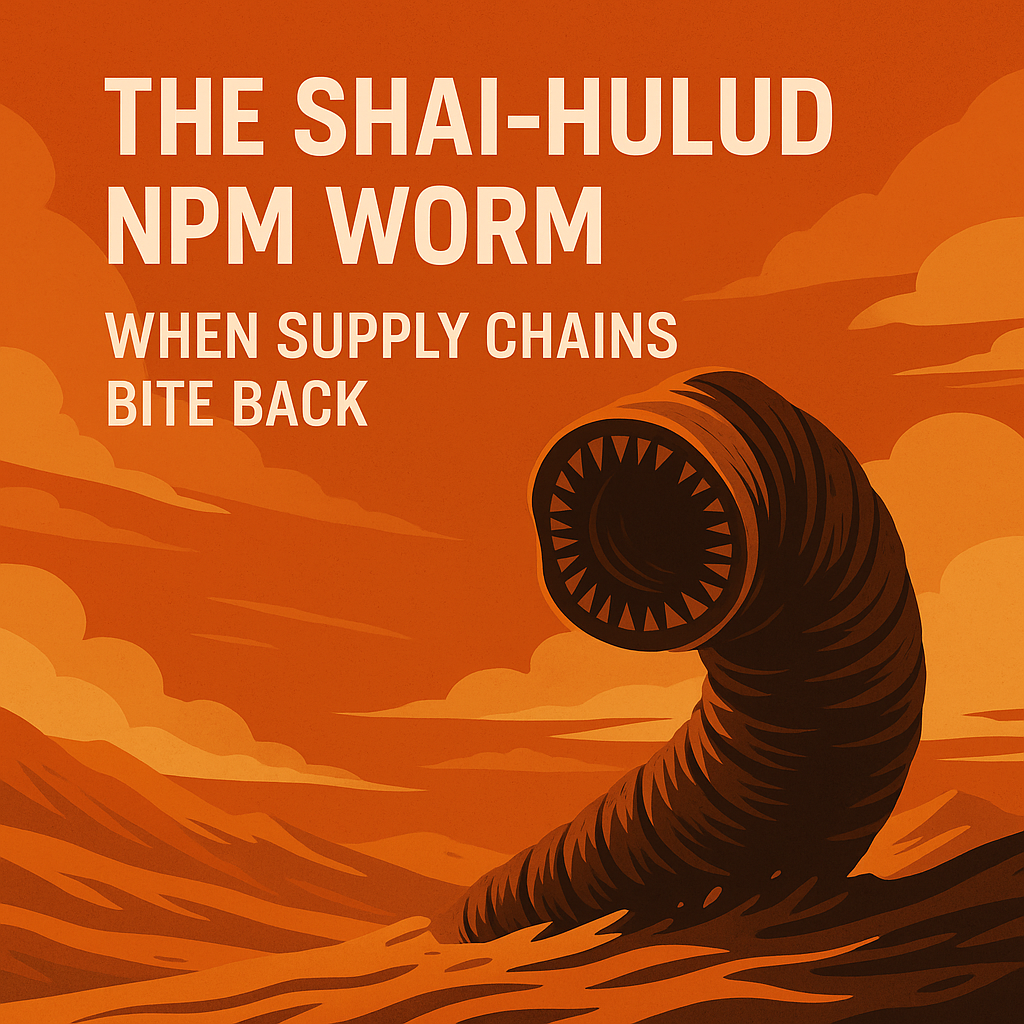
Supply chain attacks are no longer theory. This worm spread automatically, turning trusted developer workflows against themselves. Treat your software factory like critical infrastructure.
In September 2025, developers witnessed a first: a self-propagating worm ripping through the JavaScript ecosystem. Dubbed Shai-Hulud, it didn’t just inject malware; it hijacked npm tokens, GitHub credentials, and CI/CD workflows to spread itself.
Unlike smash-and-grab breaches, Shai-Hulud scaled exponentially. Within 24 hours, it infected ~200 packages, including `@ctrl/tinycolor` and `ngx-bootstrap`, contaminating countless downstream apps. The payload—a malicious postinstall script—stole secrets, flipped private repos public, and planted backdoors inside GitHub Actions.
Why it worked
- Phishing: Maintainers fell for spoofed npm alerts. MFA that isn’t phishing-proof failed.
- Trust: Developers assumed “popular = safe,” automating updates without checks.
- Weak processes: Tools like
npm installoffered no real integrity check, while CI/CD pipelines ran with over-privileged tokens.
Industry’s response
OpenSSF’s SLSA framework, Sigstore signing, and Scorecard checks all exist, but adoption remains slow. Platforms like GitHub and GitLab offer defenses—dependency scanning, secret scanning, push protection—yet teams often disable them for convenience.
What developers must do
- Enforce hardware-backed MFA.
- Rotate and restrict tokens.
- Vet and lock down dependencies.
- Harden CI/CD with least privilege and no blind auto-merges.
The takeaway
Shai-Hulud proved that supply chain attacks are fast, automated, and resilient. Defenses can’t rely on popularity, luck, or patchy adoption. Developers must treat their software factory like critical infrastructure—because the next worm won’t give you 24 hours.